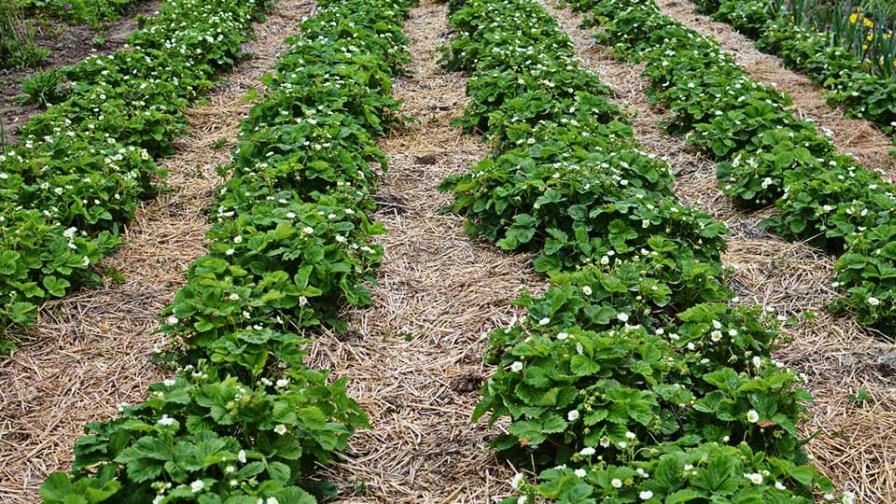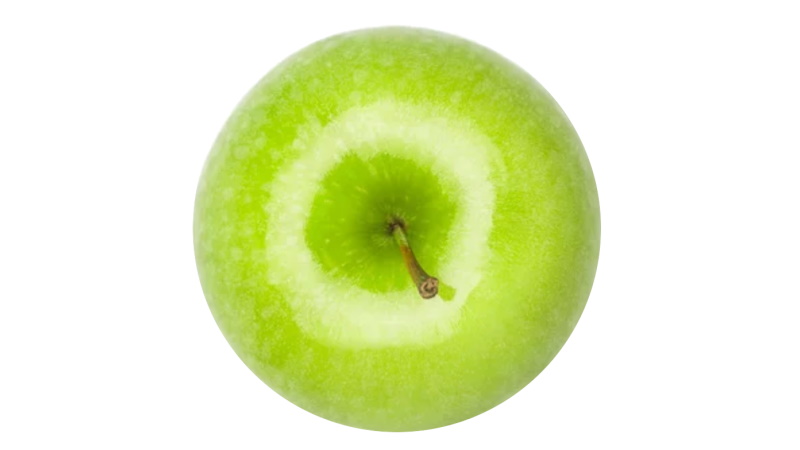Listeria Might Be a Risk on Straw Mulch for Strawberries

Is Listeria a risk on straw mulch for strawberries? Growers should pay attention to the quality of the straw mulch they use in producing strawberries, though the chance of a Listeria problem is remote.
Photo by Mykola Ohorodnyk
The question in the photo caption above, which came in an email I recently received, is new to me. Outbreaks attributed to Listeria monocytogenes have been in the news over the past several weeks, and this smaller, regional grower had attended one of the Listeria workshops sponsored by United Fresh and the Produce Marketing Association, now the International Fresh Produce Association. He began asking what I consider a hypothetical but thoughtful risk-potential question.
While being aware of the practice of both winter straw mulching and in-season straw mulch-laying practices for strawberries in some areas, I admit that I had not considered this concern. I was told that connect-the-dots moment came when working out some on-farm sustainability goals and moving from polymer mulch bed covers back to straw. The grower sought to provide similar soil moisture uniformity and to protect the strawberries from soil contact, either due to soil transfer from summer rain splash or direct contact. These new sources of straw being considered were from poly-wrapped straw bales not held for silage fermentation.
He recalled from the course that the many non-pathogenic forms of Listeria and L. monocytogenes (Lmono) grow well on decaying vegetation, in silage, and in wetted hay bales. Lmono is an environmentally fit opportunistic pathogen and may be found in and around the farm in water ways, pastures, and in soil-colonizing roots. So, the question had three parts:
1. Is it likely that Lmono could be on the hay distributed as an in-season mulch and transferred to the fruit?
2. Is it likely that Lmono could grow on the straw in-season mulch and transfer to the fruit?
3. Is it likely that Lmono will survive or grow on the strawberries?
SURVIVING, NOT GROWING
Let’s take the last part first. Lmono has been shown in a few studies to survive but not grow on intact, damaged, or freshly processed strawberries within the typical shelf-keeping period prior to spoilage or decay. Low numbers of Lmono, which may be present in soil or on straw mulch cover and transferable to strawberries, is considered a low risk to public health. My response to the straw mulch question was, of course, “Is it likely?” That is very different than “Is it possible?” It seemed possible, but not very likely. This is how I got there.
Lmono has the potential to grow in poly-wrapped straw if oxygen is not largely excluded due to thin or damaged over-wrap areas. Even if anaerobic fermentation has initiated in the central areas of the bale, lowering the pH to inhibitory conditions for Lmono, it may be able to grow on the outer, wet, and oxygenated areas. If nonfermenting mold growth develops in the wet, outer layers the conditions for Lmono to grow greatly improve. This can be a problem in animal husbandry. Using straw from damaged bales, not likely to produce quality silage for animal feed, seems to be a factor in some current sources used for mulch.
Moldy straw greatly increases the prevalence of Lmono, but this material would not be used for strawberry bed mulch cover. A reasonable conclusion would be that the level of Lmono potentially present in wrapped bales would not seem a high risk for spreading if it’s of good quality or well segregated from any moldy areas during breakdown.
ASK TOUGH QUESTIONS
Transfer from the farm soil to the straw mulch is also possible, but left on the surface of the bed and furrows in a dry or only intermittently wet condition would be less likely to promote growth of Lmono over other competitors on the straw. However, there is nothing specific about this risk potential that I could find. Regardless, I cannot foresee a compelling need to race out to test for Lmono on straw mulch coverings at this time.
While the prevalence varies substantially geographically and is impacted by regional climate (mostly rainfall), in practical terms, you cannot expect to be successful in preventing or eradicating Lmono from the farm environment. Though studies are limited, survival of high numbers of Lmono in heavily cultivated soil has generally been shown to be of short duration. Inspecting and managing the straw used for bed mulching does seem practical and doable.
I applaud this grower for thinking this through and asking some tough questions, though we often must try to answer with imperfect or incomplete data for a fully science-based response.










